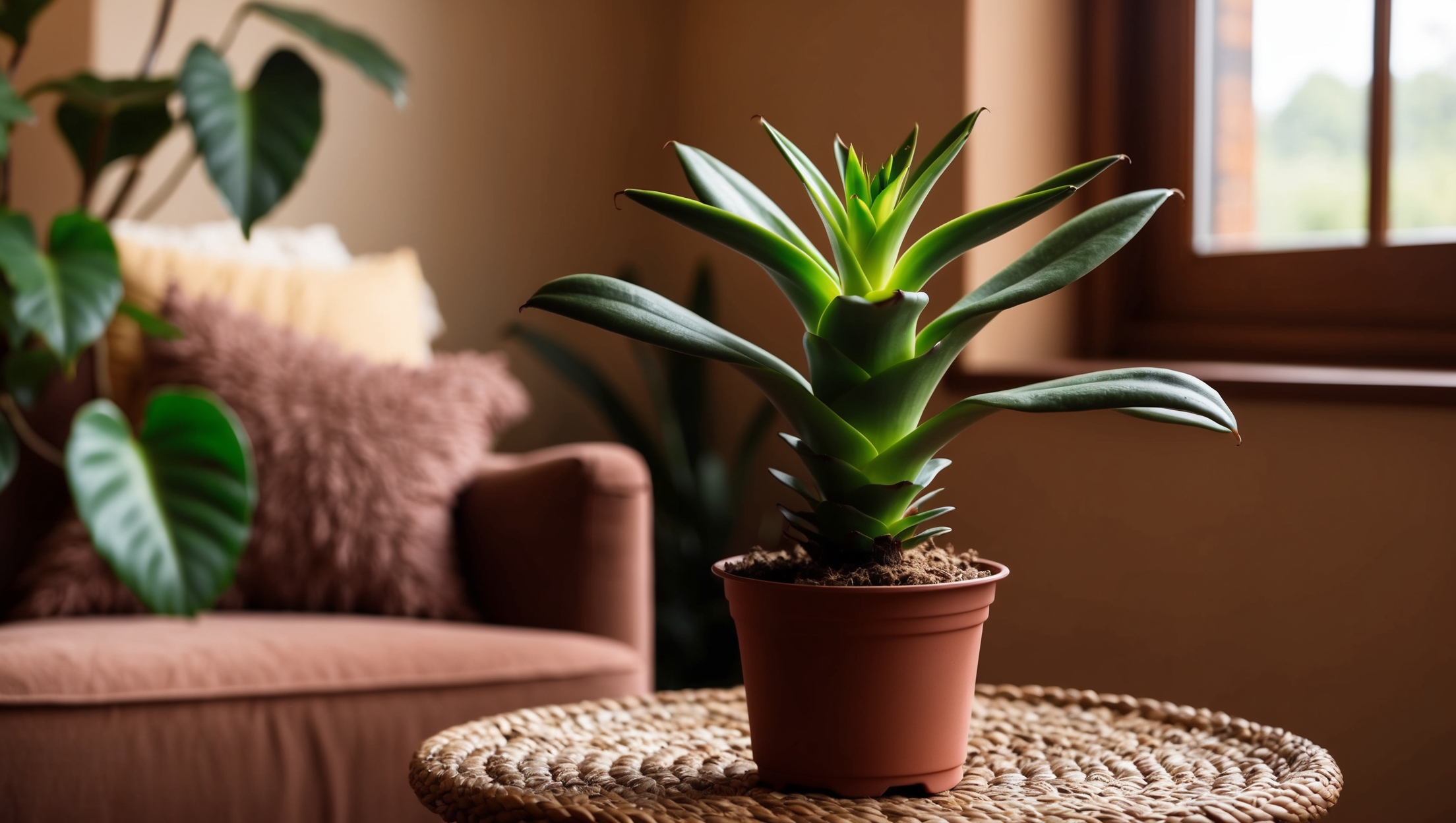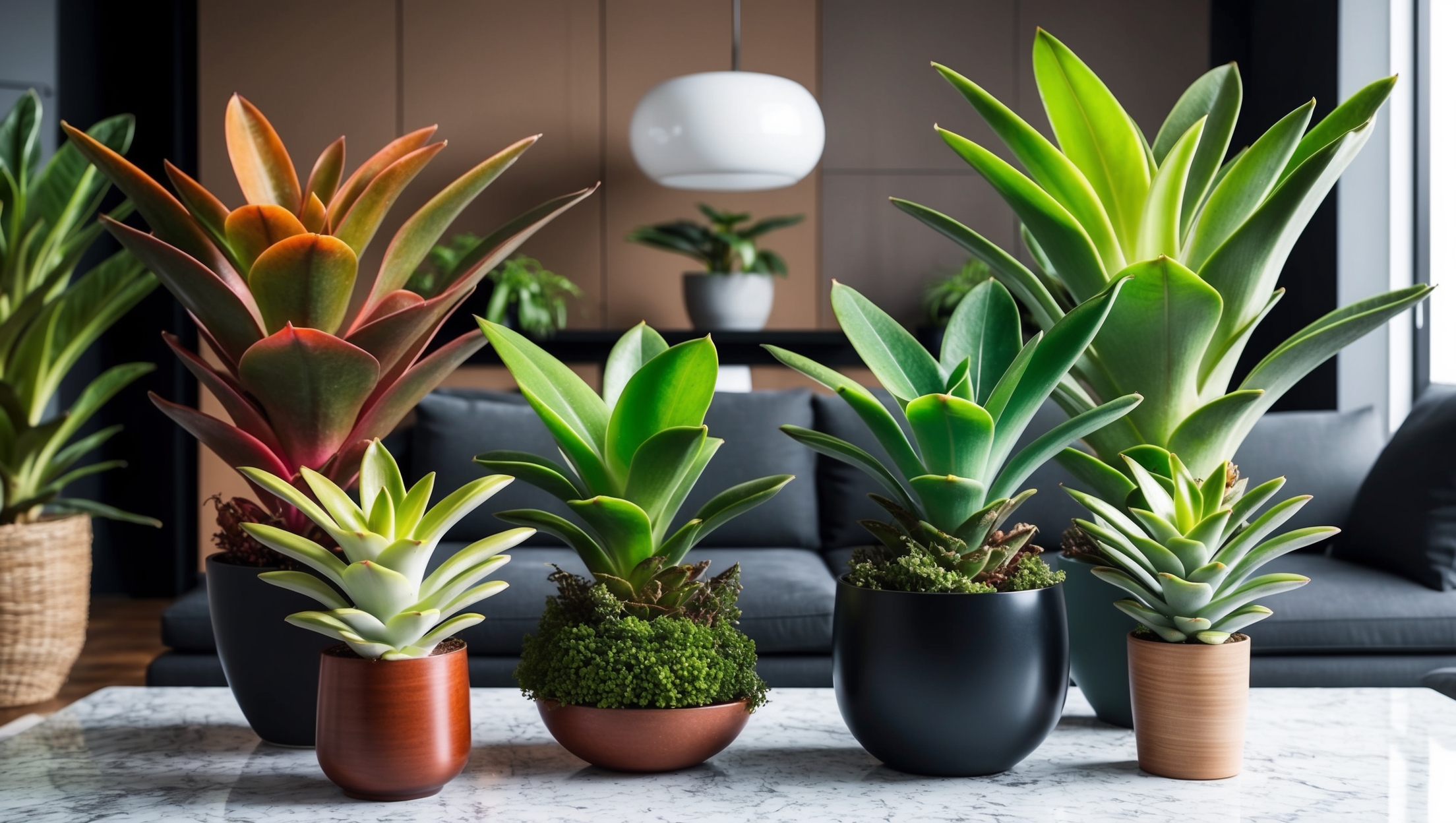Bromeliads Basics: Unlocking the Secrets of This Unique Houseplant
Hey there, fellow plant enthusiasts! Today we’re diving into the tropical world of bromeliads—a true showstopper in the houseplant scene. If you’re like me, and you’ve ever wandered through a garden center wondering what those spiky, colorful beauties are, then you’re in for a treat. Bromeliads have a way of drawing you in with their vibrant colors and unique structure, like they just strutted in from a tropical paradise right into your living room.

Why Bromeliads?
Bromeliads might seem like a diva choice, but these plants are surprisingly low-maintenance and adaptable. They’re the type of plant that thrives on a little neglect. (Don’t we all sometimes?) Native to the warmer climes of Central and South America, bromeliads have evolved to be hardy. So whether you have a green thumb or you’re the proud parent of dead succulents, bromeliads could be your new best friend.
The Science Bit (Minus the Snooze)
For a little plant nerd trivia, bromeliads belong to the Bromeliaceae family, which also includes pineapples. Who knew? This plant family is quite large and diverse, with over 3,000 species thriving in various environments. The good news? Many of these can be grown indoors, adding a splash of tropical excitement to your home.
Caring for Your Bromeliad: A Quick Guide
Now, before you run off to grab your own bromeliad buddy, let’s talk care tips. Because, trust me, these plants are like the carefree, independent spirits of the plant world—they do things their own way.
Lighting: Bromeliads prefer bright, indirect light. Think of it as a vacation under a sunhat. Too much direct sun, and they might get sunburnt—yes, plants can get sunburnt too!
Watering: They aren’t huge drinkers. Fill the central cup (often called the ‘tank’) with water and change it regularly to keep it fresh. As for the soil, keep it lightly moist but not soggy. Think moderate, not monsoon.
Humidity: As native jungle dwellers, bromeliads love humidity. If your home’s air is as dry as my humor, a pebble tray or a room humidifier might do the trick.
Feeding: Bromeliads aren’t greedy. Feed them a diluted liquid fertilizer every month or two during growing seasons for a boost.

Bromeliads and Decor: A Match Made in Heaven
One of the fun parts about bromeliads is their range of exciting colors—from fiery reds to cool blues and everything in between. They’re like nature’s living artwork, guaranteed to draw eyes and start conversations.
Whether you’re nestling one on a bookshelf or creating an indoor jungle, the options are endless. Me? I love the dramatic flair of placing a bromeliad in a quirky pot on my coffee table. Nothing says “I have my life together” quite like an impressive houseplant, right?

The Final Word on Bromeliads
So, if you’re looking for a low-maintenance plant that packs a punch in the style department, look no further than the bromeliad. They’re not just plants; they’re tiny tropical statements. They bring a hint of the wild into our carefully curated chaos.
Thanks for stopping by! May your plants be healthy and your home ever so cozy. Got any bromeliad wisdom or tales to share? Pop them in the comments below—I’d love to hear from you!